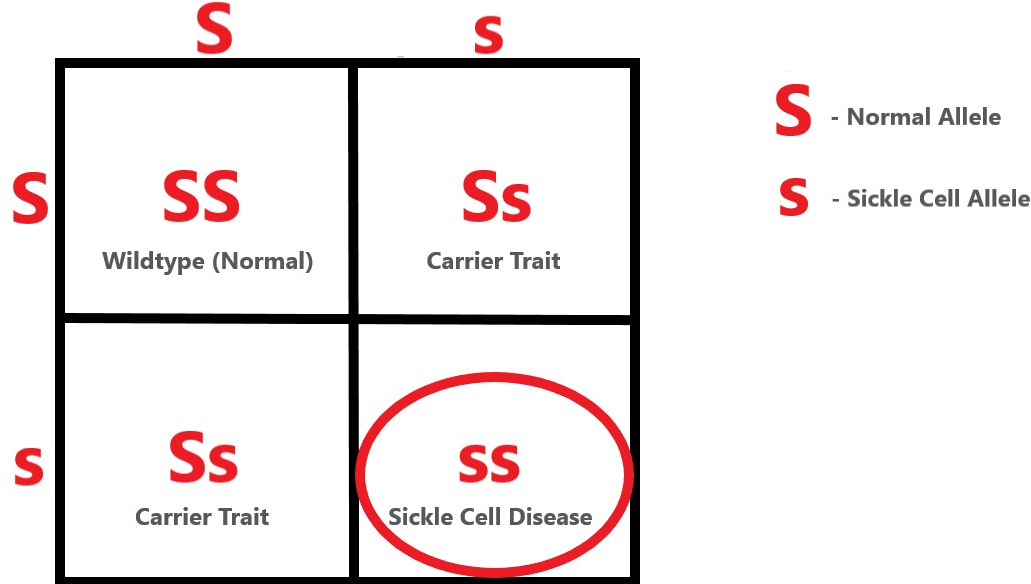Science Lion recently had the pleasure of having a PhD candidate, Raven Hardy, drop by to speak with us about her upcoming event for sickle cell advocacy. To preface awareness of this event and the cause behind it, she also shed some light on her journey through graduate school, in addition to how she became interested in sickle cell research.
Raven is a neuroscience PhD candidate at Emory University, working in the lab of Dr. Hyacinth, which is part of the Aflac Cancer and Blood Disorders Center. In particular, she looks at the profile of inflammation in sickle cell patients, and the impact that it may have on brain structure, and subsequently on cognitive deficiencies (dysfunction of the brain) and cell proliferation (cell division and growth).

The sickle-like shape of the red blood cell wreaks havoc on the circulatory system, causing blockages in the blood vessels and inducing inflammation.
Upon making these assessments, she observes how these effects track with age, from childhood to adulthood; these alterations of the brain appear to be culprits of the resulting strokes and neurological disorders that may manifest in sickle cell patients.
All of which are done in a mouse model that is humanized or genetically altered to mimic the expression of relevant human proteins in the brain. The purpose of humanizing in this case is to resemble as closely as possible what happens in a human brain, without having to use one.
But how did Raven get here, in the first place, to do this kind of research? Many times, people draw inspiration and direction in life from tragedy, and this case stands true for Raven, as well. During her senior year of undergraduate studies, Raven’s sister, who herself lived with sickle cell, passed away at the age of 26 from brain death, extending from complications due to a preceding sickle cell crisis. After managing to overcome that great loss and obtaining her degree, she began her unconventional path through graduate school.
Although she had a passion to learn more about sickle cell and its effects from a research standpoint, she initially entered a PhD program at Scripps Research Institute studying brain-related microorganisms called prions. She later transferred to Emory University, switching gears in her research, and focusing on brain imaging as it related to nutrition in predominately African American communities. However, her journey did not stop there.
“Unfortunately, I had to leave that lab”, Raven reflected with a chuckle. “And as it would so have, I was able to join a lab that did sickle cell research, so I actually think that my path took a complete circle to get me right where I wanted to be.”
That lab would be her current research home with Dr. Hyacinth. “But I’m happy to be where I am”, she remarked with a smile on her face. “I feel as though when you’re meant to be somewhere you’ll end up there, and I think this is where I’m meant to be.”
So what is sickle cell disease? Sickle cell is a genetic blood disorder that can manifest itself if two parents carry the sickle cell trait. Within the context of the disease, red blood cells possess a “sickle-like” shape, inducing pain and inflammation – a response of immune cells – which can result in a “crisis event.” Unfortunately, these crisis events can lead to adverse outcomes such as stroke, or even death.

Bridging the conventional knowledge of the disease with what she is researching now in the neuroscience realm, Raven informs us that individuals with sickle cell can have high levels of behavioral and cognitive deficits. “So as far as blood is concerned, morbidities may stem from high levels of inflammation that induce the crisis (event) , and this inflammatory crisis may occur in the brain leading to different forms of brain damage.”
In addition to the amazing and intriguing research that she conducts in the lab, Raven really has a passion to advocate for closing the racial disparity gaps within health care, and of course in raising awareness of sickle cell disease, especially as it disproportionately impacts people of African descent.
“There is a lot of research and support for children with sickle cell, but when you reach adulthood and require a continuum of care, unfortunately it is not to the level where it should be”, Raven contends. “So, definitely there should be more physicians that are able to treat and manage individuals with sickle cell in crisis, and in general health.”
Speaking of her endeavors in public health advocacy, this leads us to her current task of raising awareness of sickle cell in her local community by holding a “sickle cell gala” on her birthday, in honor of her late sister. The Dec. 6 art gala event includes a classy dinner at the Miller-Ward Alumni House in Atlanta, GA, and offers a social opportunity to network in a nurturing environment with other participating individuals. All proceeds toward the event will go to sickle cell causes.
If you would like to follow in Science Lion Media’s footsteps and donate to the cause of furthering sickle cell research and bettering the relevant public health policy, please visit her GoFundMe page. This way, she can allocate the funds to the most reputable organizations for maximum community impact. If you are interested in attending her art gala event, please reach out to Raven at blackbyrd1206@gmail.com for any remaining seats.

Be sure to check back soon for the uploaded, full podcast interview with Raven as the Science Lion Media team chopped it up with this outstanding young lady, who has personified perseverance in the face of an unconventional road to her PhD.
Don’t forget to subscribe to our platform to receive notifications of our latest intriguing science news and media! Also, follow and ‘like’ our Facebook group!
